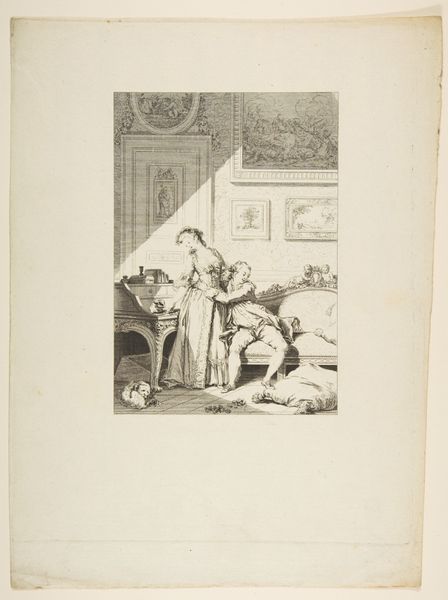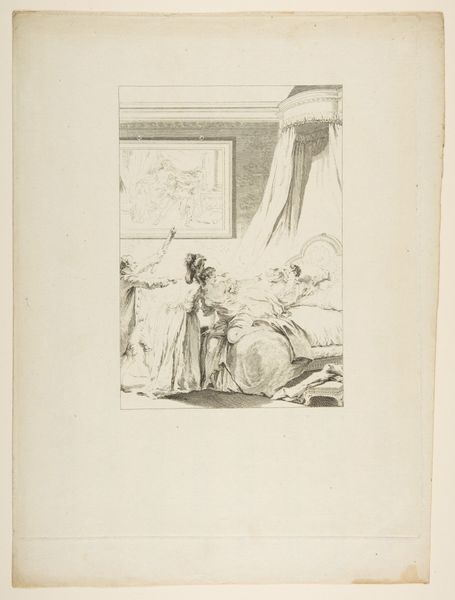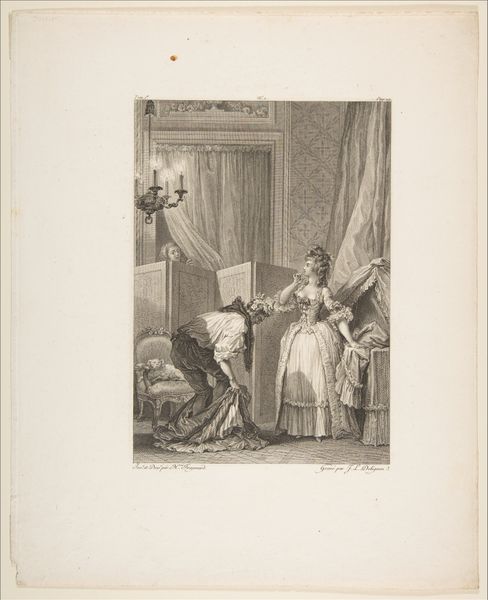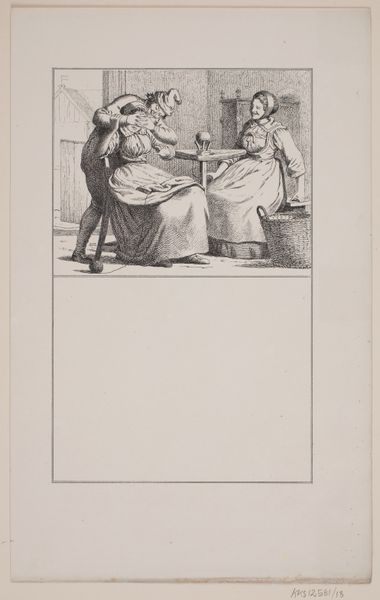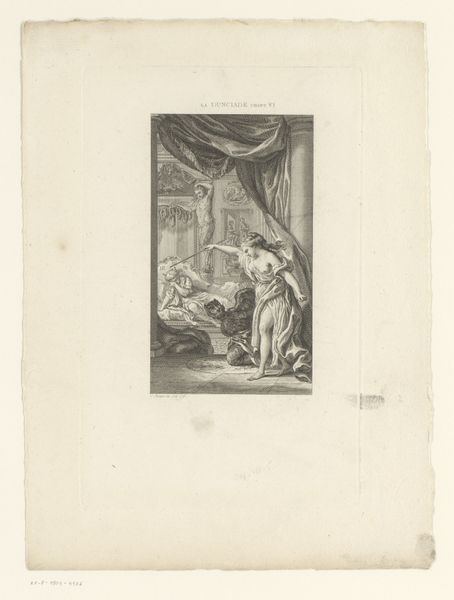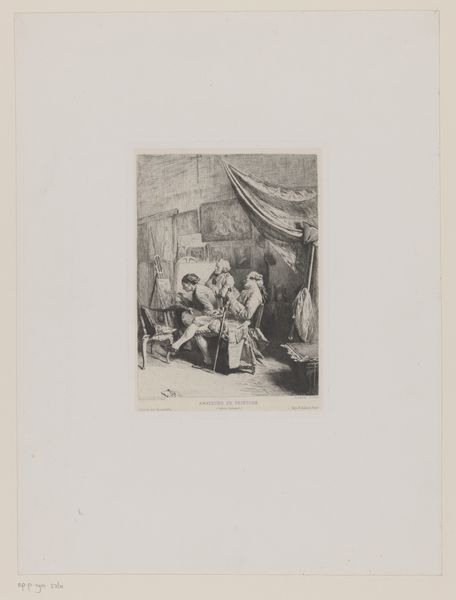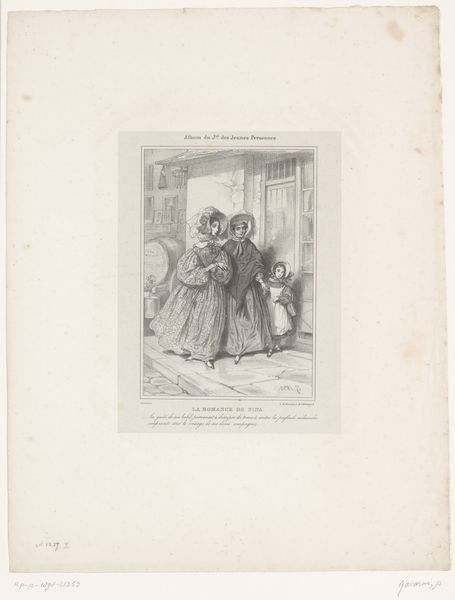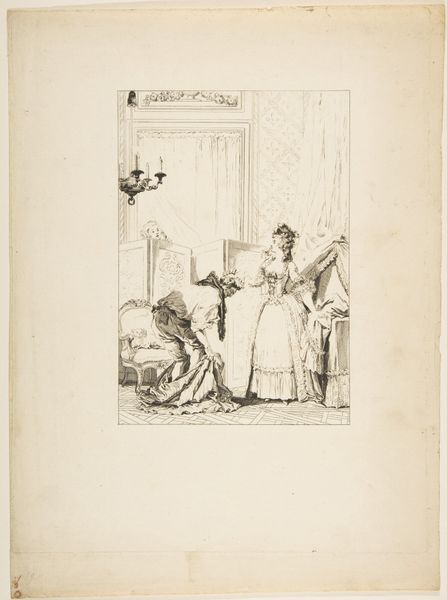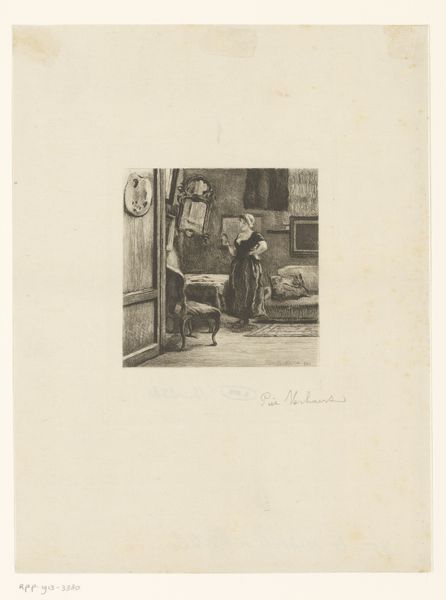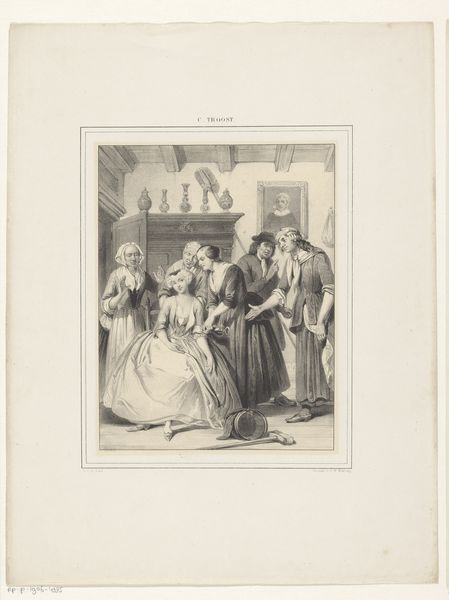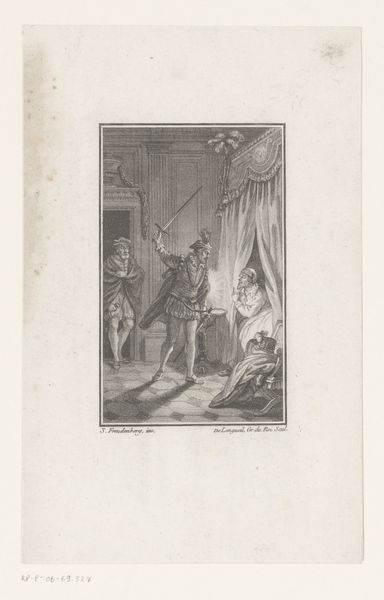
La Gageure des trois Commeres: La Servante, from "Contes et nouvelles en vers par Jean de La Fontaine. A Paris, de l'imprimerie de P. Didot, l'an III de la République, 1795" 1790 - 1800
0:00
0:00
drawing, print, etching, paper, engraving
#
drawing
# print
#
etching
#
paper
#
romanticism
#
genre-painting
#
history-painting
#
engraving
Dimensions: Sheet: 13 1/8 × 9 5/8 in. (33.4 × 24.4 cm) Plate: 12 1/2 × 9 5/8 in. (31.7 × 24.4 cm)
Copyright: Public Domain
Curator: This etching by Philippe Trière, dating to the 1790s, is titled "La Gageure des trois Commeres: La Servante, from 'Contes et nouvelles en vers par Jean de La Fontaine'". It depicts a scene within a bedchamber. Editor: Immediately, I'm struck by the stillness and muted quality of this image, despite the implied drama of figures gathering around a sickbed. Curator: As an engraving on paper, the texture, the grade of the paper stock itself would have influenced the reception of the image. Its reproductive function also suggests how imagery was disseminated and consumed, a key consideration. These prints offered more people the chance to own or collect visual depictions that would have otherwise been affordable to wealthier people. Editor: It evokes, to me, the fragility of life through the iconography of illness. Look at how the artist renders the face of the sick woman. She is a representation of humanity reduced to its most vulnerable state. This is intensified by the looming bed curtains. Curator: The production context really highlights some contrasts, doesn’t it? We’re dealing with the rise of mass print culture coinciding with a period of intense socio-political turmoil in France, around the Revolution. Think about what was considered acceptable and marketable amidst political unrest and societal change, influencing even seemingly conventional imagery. Editor: Indeed, considering that prints such as these illustrated La Fontaine's tales. These works, ostensibly for entertainment, were often laden with social commentary. Even here, within the confined space of the bedchamber, Triere visualizes those familiar power dynamics and tensions—servants attending the ailing mistress, symbols of class disparity made strikingly personal through the vulnerability of illness. Curator: It also shows that we're really dealing with different forms of artistic labour here, with the engraver and printer participating in the commodification of images and stories. It also raises an interesting question. Who would have been buying, circulating, and making art such as this? That economic and historical backdrop provides the bedrock for its existence. Editor: Examining it now, the way the composition leads your eye to the face of the invalid, partially obscured but still central, demonstrates the image's focus on mortal themes: illness and ultimately death. This isn’t just an illustration but a visual contemplation on mortality itself. Curator: Thinking of this print as an object of exchange, reveals how intertwined artistic production was with consumption and politics during the tumultuous years of the French Revolution. Editor: A potent blend of social reality and timeless symbolic weight—an image reflecting on both personal frailty and structural inequality.
Comments
No comments
Be the first to comment and join the conversation on the ultimate creative platform.

